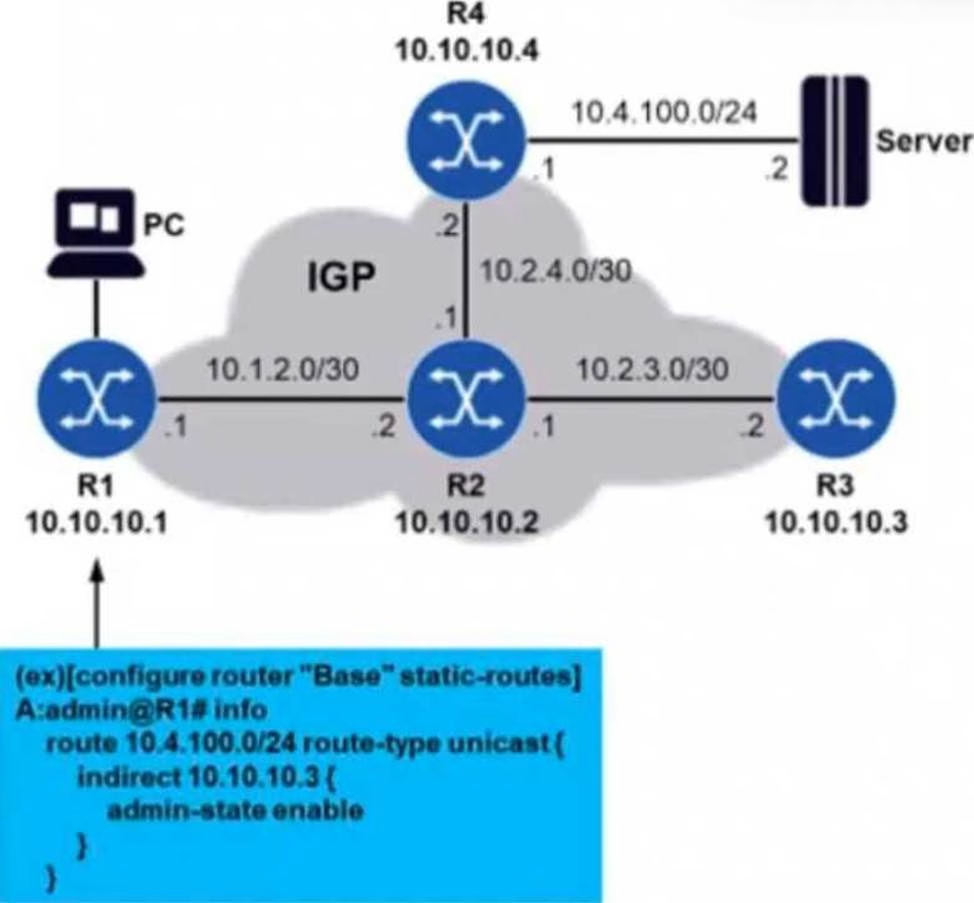What may be the problem in this case?
Refer to the exhibit.

Routers R1 through R4 are running an IGP in such a way that they have each other’s system IP addresses in their routing tables. A static route is configured on router R1 so that it can reach subnetwork 10.4.100.0/24. The network administrator decides to use an indirect static route, as shown in the diagram. However, pinging the server from router R1 fails.
What may be the problem in this case?
A . Router R1 drops the echo request because address 10.10.10.3 does not belong to an adjacent router.
B . Router R2 drops the echo request because it does not have subnet 10.4.100.0/24 in its routing table.
C . Router R3 drops the echo request because it does not have subnet 10.4.100.0/24 in its routing table.
D . The echo request arrives at the server but there is no path for the echo response to return to router R1.
Answer: D
Explanation:
The static route configured on router R1 uses an indirect next-hop, which is 10.10.10.3 (R3). While the echo request from R1 reaches the server through the IGP, the problem lies in the return path for the echo response.
The route 10.4.100.0/24 is reachable through R3, but there is no reciprocal route in R3’s routing table that allows the response to flow back towards R1. This results in a failure to return the echo response to R1, causing the ping to fail.
Latest 4A0-112 Dumps Valid Version with 40 Q&As
Latest And Valid Q&A | Instant Download | Once Fail, Full Refund

